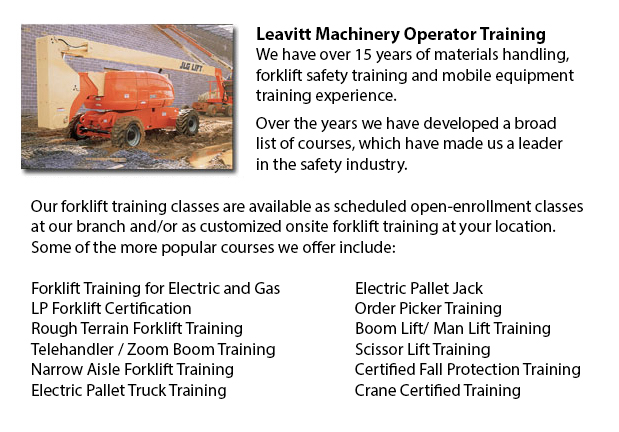
Aerial Platform Training Vancouver - Aerial jacks can accommodate many tasks involving high and tricky reaching places. Often utilized to perform routine maintenance in structures with elevated ceilings, trim tree branches, hoist heavy shelving units or patch up phone lines. A ladder could also be utilized for some of the aforementioned tasks, although aerial platform lifts offer more security and stability when properly used.
There are a couple of distinctive designs of aerial forklifts available, each being able to perform moderately different jobs. Painters will sometimes use a scissor lift platform, which can be utilized to get in touch with the 2nd story of buildings. The scissor aerial hoists use criss-cross braces to stretch out and lengthen upwards. There is a table attached to the top of the braces that rises simultaneously as the criss-cross braces raise.
Cherry pickers and bucket lift trucks are another type of the aerial hoist. Commonly, they contain a bucket at the end of a long arm and as the arm unfolds, the attached bucket platform rises. Platform lifts utilize a pronged arm that rises upwards as the lever is moved. Boom lift trucks have a hydraulic arm which extends outward and elevates the platform. Every one of these aerial hoists call for special training to operate.
Through the Occupational Safety & Health Association, also called OSHA, education programs are offered to help make sure the employees meet occupational values for safety, machine operation, inspection and repair and machine weight capacities. Employees receive qualifications upon completion of the classes and only OSHA licensed personnel should drive aerial platform lifts. The Occupational Safety & Health Organization has developed rules to uphold safety and prevent injury when utilizing aerial hoists. Common sense rules such as not using this piece of equipment to give rides and ensuring all tires on aerial lift trucks are braced in order to hinder machine tipping are observed within the rules.
Unfortunately, data show that over 20 operators die each year while running aerial platform lifts and 8% of those are commercial painters. Most of these mishaps are due to inadequate tire bracing and the hoist falling over; therefore several of these deaths were preventable. Operators should ensure that all wheels are locked and braces as a critical security precaution to stop the device from toppling over.
Marking the encompassing area with observable markers have to be used to safeguard would-be passers-by so they do not come near the lift. Moreover, markings should be placed at about 10 feet of clearance amid any utility cables and the aerial lift. Hoist operators must at all times be appropriately harnessed to the hoist when up in the air.
-
Telehandler Ticket Vancouver
Telehandler Ticket Vancouver - The telescopic handler or telehandler is a frequently used equipment in agricultural and industrial applications. This equipment is similar in appearance to a forklift and also functions in a similar way, even if teleha... More -
Forklift Operator Certification Vancouver
Forklift Operator Certification Vancouver - Forklift operator certification is usually needed for employees working within industrial, warehouse or construction environments to guarantee the safe operation of forklifts. Workplace training need to fol... More -
Certified Fall Protection Training in Vancouver
There are high numbers of injuries at work linked to falling and a lot of fall-related deaths reported each and every year. The majority of these instances might have been avoided with better training, better measures in place, and by correctly equip... More -
Forklift Training Course Vancouver
Forklift Training Course Vancouver - CSA and OSHA establish criteria for forklift safety training which meets existing standards and regulations. Anyone planning to utilize a forklift is needed to successfully complete safety training prior to using... More -
Overhead Crane Certification Vancouver
Overhead Crane Certification Vancouver - The overhead crane certification course is a program that is designed to assist trainees, even if they have literacy or language restrictions. The course comprises a practical hands-on training session and a c... More -
Forklift Instructor Training Vancouver
Forklift Instructor Training Vancouver - Forklift Instructor training certification is recommended for forklift operators who would like to become instructors. To qualify for forklift instructor training, operators must be able to prove they possess... More -
Crane / Overhead Crane / Truck Mounted Crane / Hydraulic Cranes Training in Vancouver
Overhead cranes are likewise referred to as bridge cranes. They are actually a type of crane which comprises a hook and line apparatus which runs along a horizontal beam which runs along two widely separated rails. Lots of overhead cranes can be foun... More -
Scissor Lift Safety Training Vancouver
Scissor Lift Safety Training Vancouver - A scissor lift is a kind of platform lift that moves vertically. The lift table is moved in a vertical motion because of criss-cross folding supports which are linked in what is referred to as a pantograph. Th... More

Forklift Training Vancouver
TOLL FREE: 1-888-254-6157
24389 Fraser Highway
Langley, British Columbia
forklifttrainingvancouver.com
Email Us
About Us


